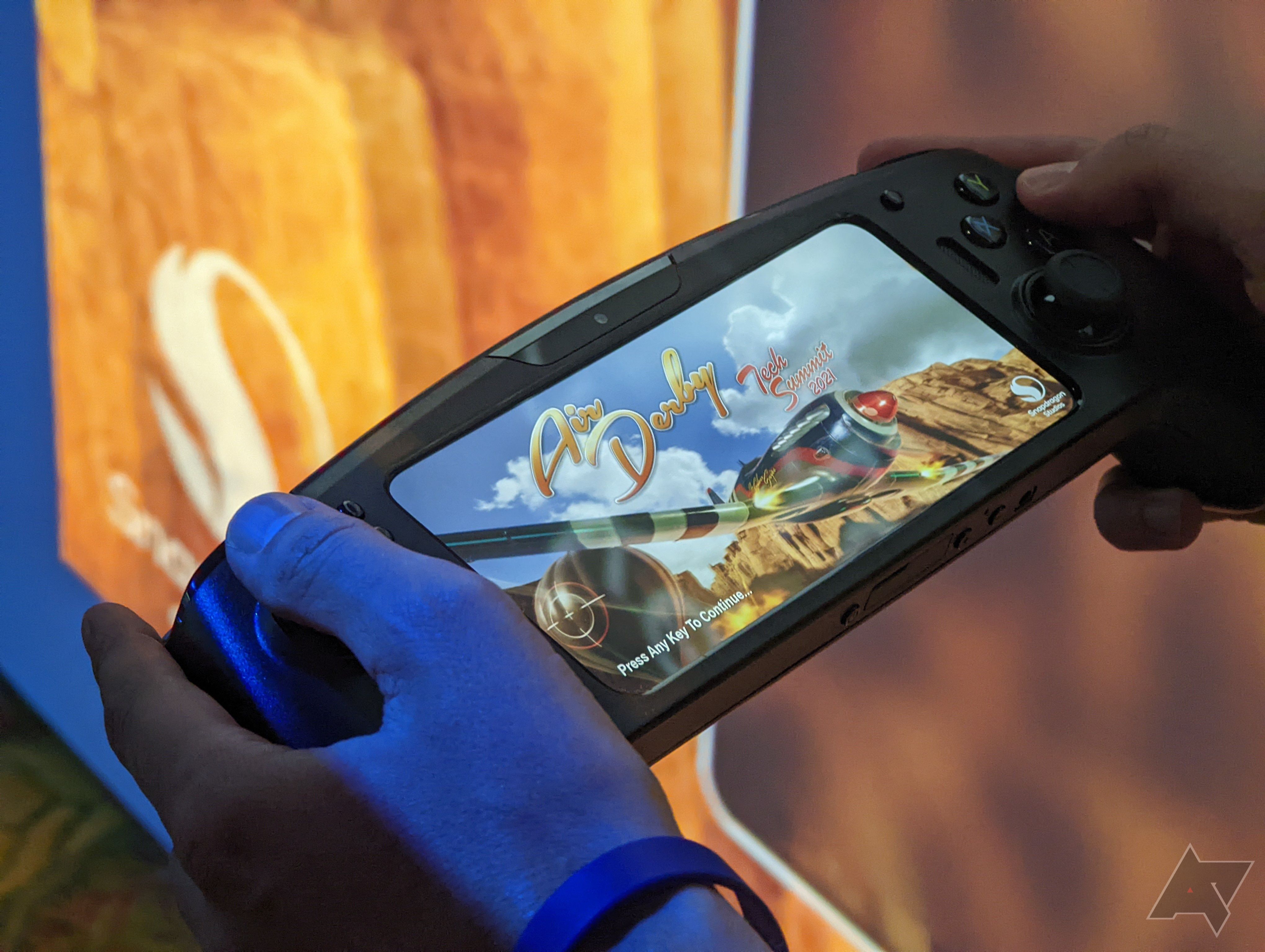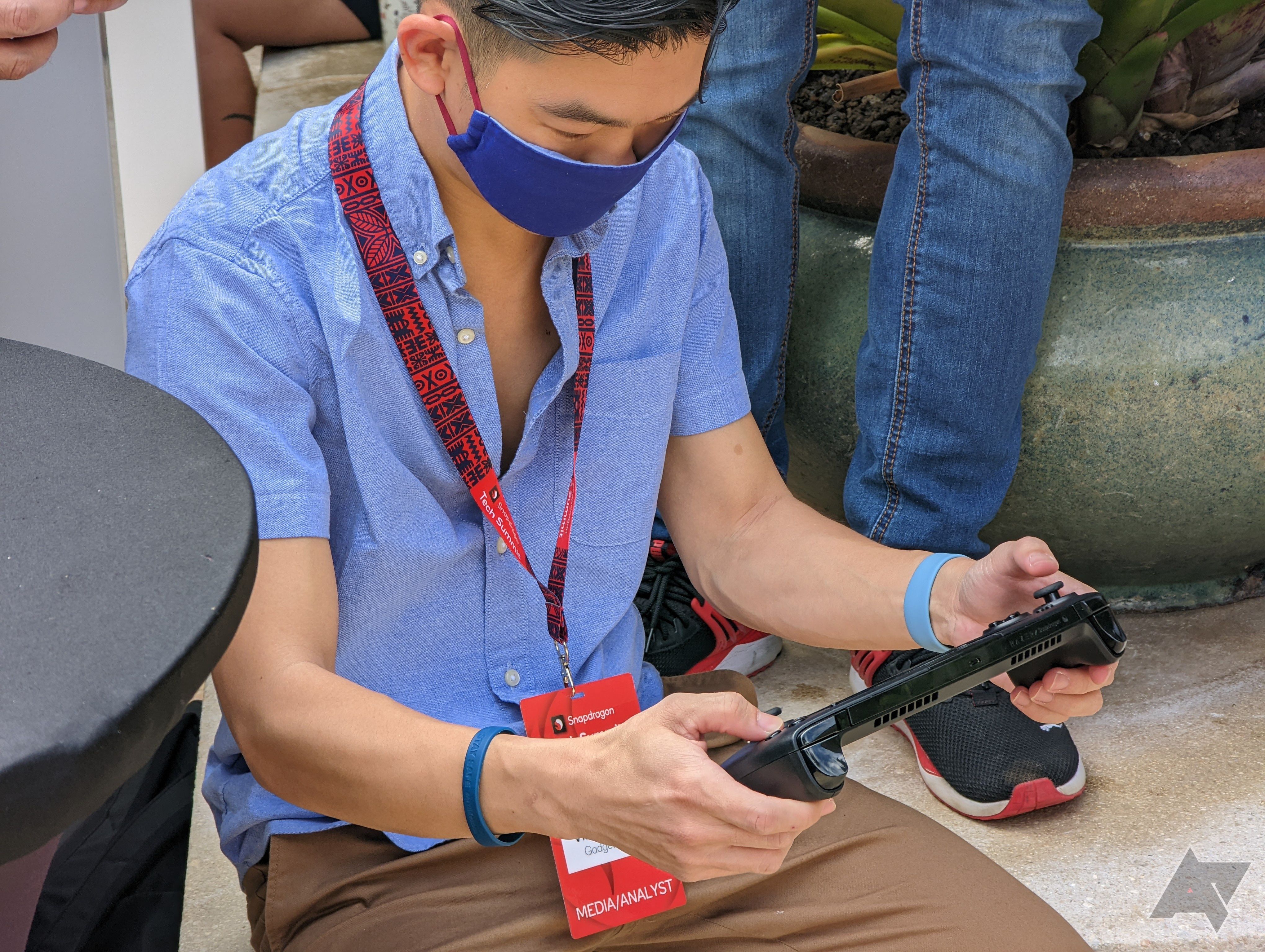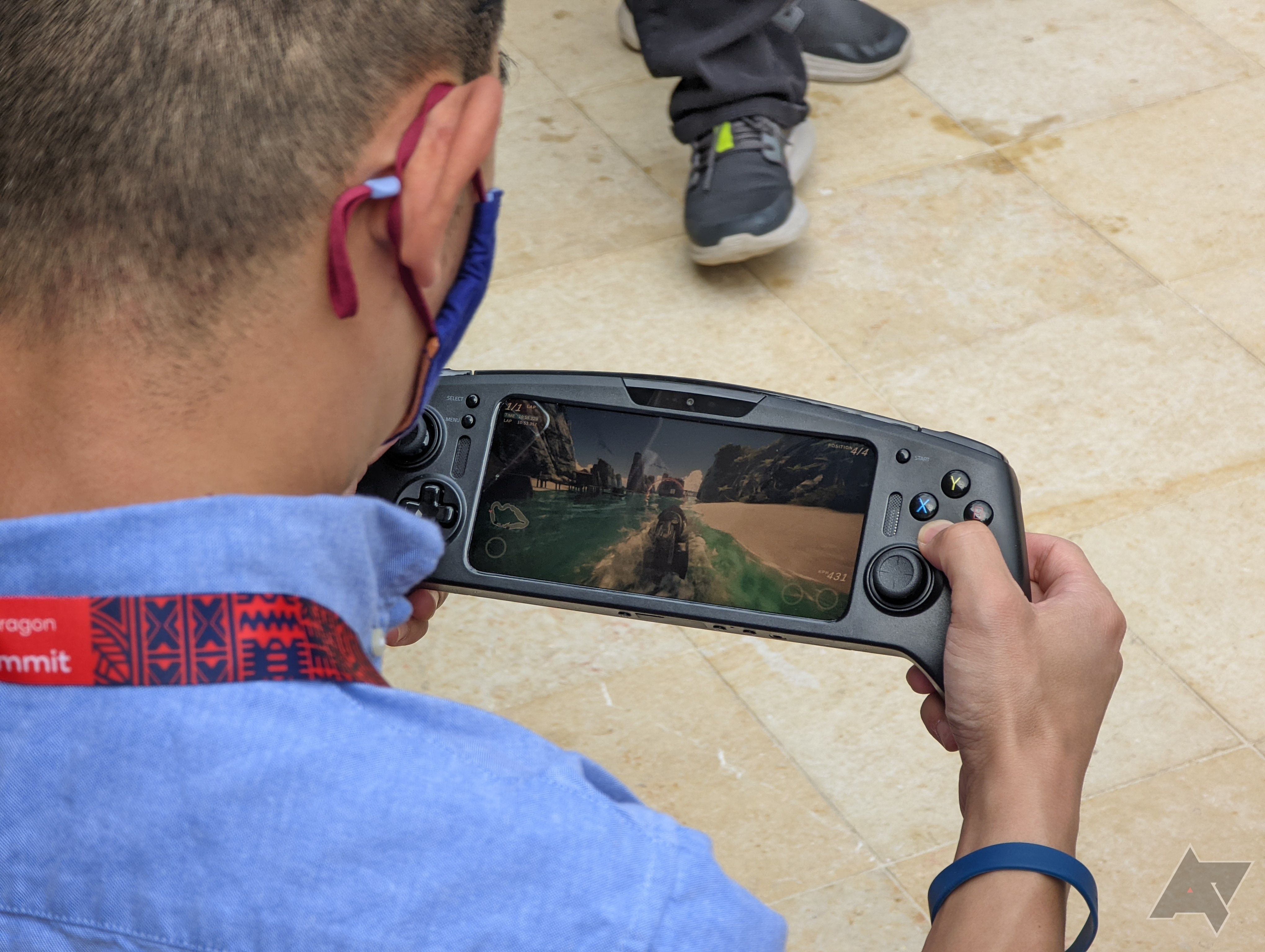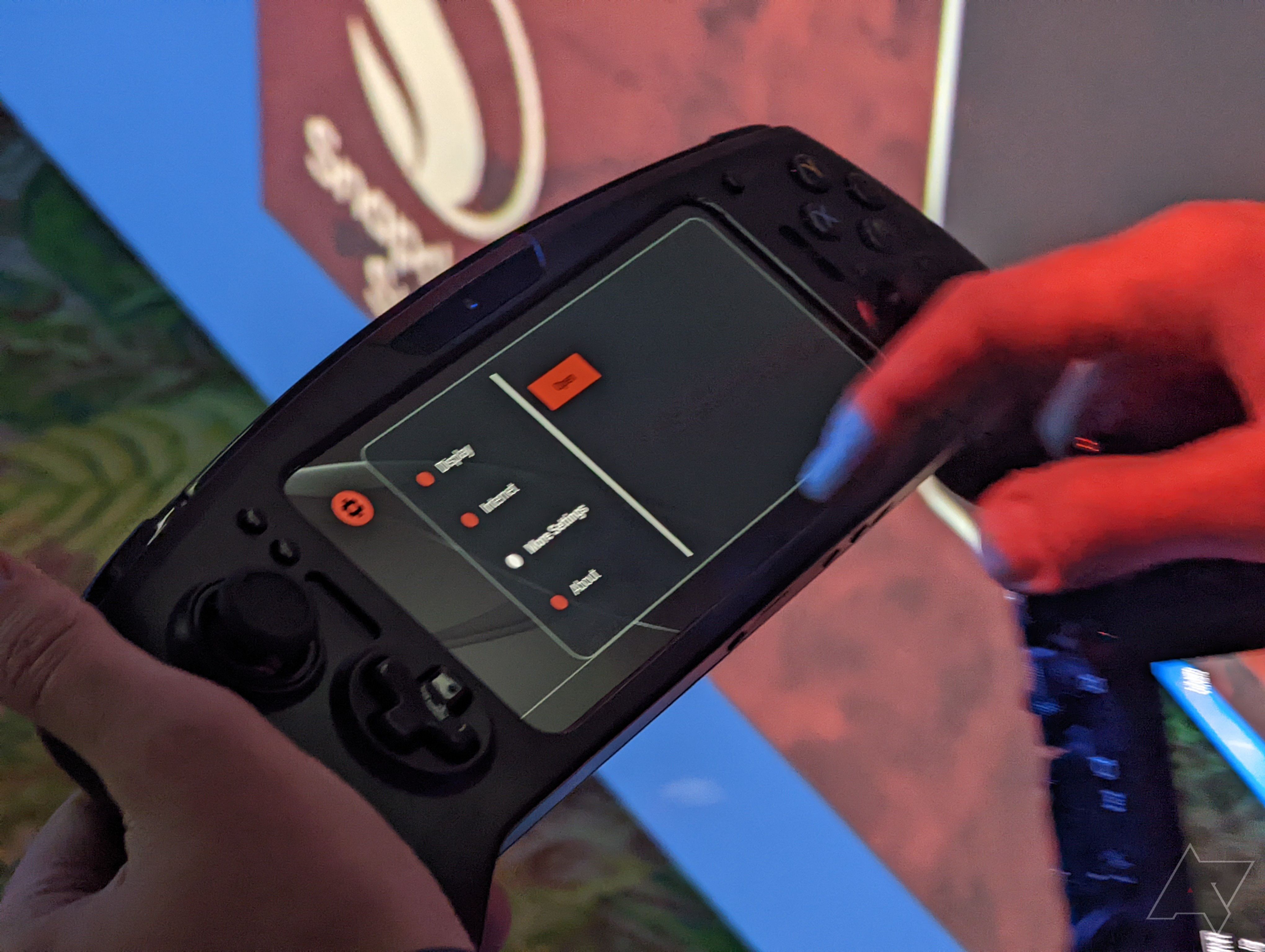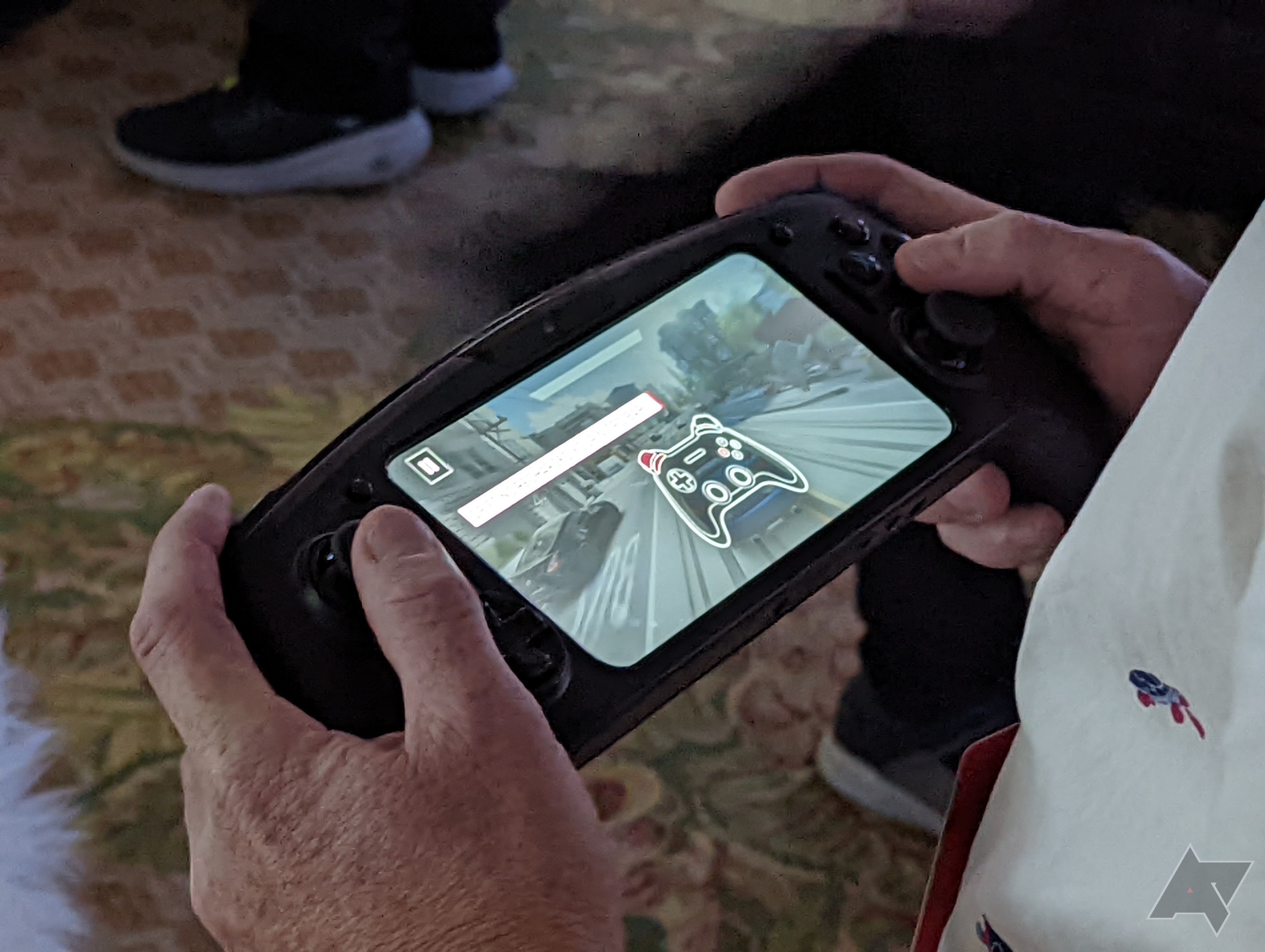I think many of our readers were disappointed to learn that the Switch-like gaming hardware Qualcomm showed off at its annual Snapdragon Tech Summit wouldn’t actually be available to buy. It looks like a polished product you’d see on a shelf next to a pile of accessories in a big-box store, but it’s not for you or me just yet. It’s a developer-only party. While we wait for something to manifest that we can actually buy, let me tell you a little more about what that developer hardware was like to use and what we can expect in both software and hardware when consumer units do actually land.
Full disclosure: Qualcomm flew basically everyone in tech media to its yearly summit for the last few days, where we’ve been able to harass engineers, VPs, and product managers about its recent announcements. I’m pretty sure they’re getting a little tired of me and my incessant questions regarding specs by now, and my legs are covered in mosquito bites.
Hands-on with the Snapdragon G3x Gen 1
First, some relevant context. Like many of our readers, I grew up with the Game Boy. I had a PC, but not a very good one until I was older, and a console connected to the TV was stuck at home when I wasn’t. At least 90% of the time, playing video games meant playing my Nintendo handheld — four glorious shades of black and white, at first, and then color once that was available. So gaming was always a mobile-first experience for me. But once I switched to carrying big-screen smartphones everywhere, playing games on that touchscreen just never felt right. I wanted those hardware controls — buttons, joysticks, or triggers, not flat non-tactile glass.
Things like the Nintendo Switch scratch that itch, but I have that sort of Android ethos at heart: I want complete control and ownership to do things like load up emulators or make my device my own. I’ve experimented with products like GPD’s tiny computers, but the quality there always left me disappointed. So I was understandably interested when plans for Qualcomm’s device leaked early this year.
As I touched on, the developer hardware, co-developed with Razer, is nicer than you’d expect it to be, given it’s probably only going to be used in development studios, where big ugly boxes are more the norm. That’s not to say it feels particularly premium; it’s light and sort of flimsy feeling in that too-much-plastic-and-empty-space sort of way, but it’s otherwise well put together and pleasant to use. It just feels like it could be a few ounces heavier.
The buttons on the face are tactile, though not quite clicky, reminding me of the face buttons on an Xbox controller. The triggers don’t quite meet the same comparison, but they’re honestly pretty good, with a smoothly ramping (if, in my opinion, slightly too low) resistance. I’m definitely team Playstation layout rather than Xbox when it comes to joysticks, but I still liked the staggered sticks themselves: They’re stiff enough with no wiggle or drift when centered, and smooth and precise while rotating through the full range of motion. I’m hardly a controller connoisseur, but nothing about it jumped out at me as awful, and I didn’t feel like I was at a disadvantage while playing.
The 6.65” 120Hz OLED screen was also nice. At 1080p I thought the resolution might be merely okay, but I found myself holding it further away than I do a phone, and it’s a whole lot sharper than the 720p screen on a Nintendo Switch. It was bright enough in the limited environments I could use it in — indoors and in the shade of a kind of open veranda. I suspect it would have been okay in direct sunlight. Understandably, I couldn’t test things like battery life or mmWave connectivity, and it was tough to test audio in the environments I was able to use it in. What I could hear seemed fine. I also didn’t test things like call performance because, although it will support cellular data connectivity, it’s not actually a “phone” in the sense that it can’t make calls.
It’s a whole lot sharper than the 720p screen of a Nintendo Switch
The software was a little barebone, and Qualcomm’s launcher barely feels like Android. A side-scrolling list of titles offset with buttons on the bottom for things like Settings was intuitive enough, but it did feel a little stripped down. It’s probably more convenient for casual use, but if you’re that Android-as-Android enthusiast that loves nested menus filled with niche and sometimes superfluous options and settings, it doesn’t deliver that kind of experience. That might not actually matter when you get your hands on a future product, though — more on that later.
I could only play a handful of titles, both due to lack of time and being limited to what was installed on the unit itself, but the quality was good on basically everything I ran. (Xbox Cloud Gaming looked awful until I realized it was running on the hotel’s legitimately garbage Wi-Fi, at which point I was impressed it wasn’t even worse.) Detail, lighting, and ambient effects on Final Fantasy VII The First Soldier looked great, and Air Derby 2 (an in-house game developed by Qualcomm for the demo) was sharp and clear. These are all mobile games, of course, but they were running at nice, high-quality settings and looked a whole lot prettier than the visuals my Switch can spit. Controls were responsive, too, without the sort of lag you sometimes feel from things like bad Bluetooth controllers.
The most impressive thing for me, though, was how well it all came together, as if it were basically ready to sell tomorrow. Often these early tech demos have rough edges we have to work around, imagining the bits in between when we’re basically just handed a proof of concept. This wasn’t like that. I thought I’d see something like the controls break or even just run into some stuttering or software jank, but (outside cloud streaming on the garbage Wi-Fi connection) it was surprisingly seamless. Most of the titles seemed to work with controllers by design already, but I’m told that even titles that don’t support controllers will work thanks to AKS controller mapping, which Qualcomm has built right in.
So what can we expect when you actually buy one?
I was able to snag a last-minute interview with Qualcomm’s Micah Knapp (senior director of Product Management and on-stage presenter) to talk about the new device, Qualcomm’s plans for it, and the platform it represents in general — and that last bit is really the important part, when you think about it. You probably won’t be buying this unit I played with today, but you might get some other model that shares its guts, and that’s really what the company is trying to do here.
You might assume (like me) that because Qualcomm went to the effort of marketing all the specifications of this new device yesterday and made a bunch of software specifically for it, that the company was trying to establish a platform it could fully control. So, I sat down to ask my questions, and my first felt pretty natural: “What sort of minimum requirements or specs will Qualcomm impose for devices using the G3x?” The short answer is “none,” if you can believe it.
As explained to me, Qualcomm basically wants to treat the G3x like it does a phone chip for the phone market. The company will provide the SoC and it will have some software available for companies that want to use it, but manufacturers can choose whatever hardware they want to go with it — within reason, anyway. There are still things like Google’s GMS requirements to consider if device makers want access to the Play Store. But, if and when you buy a G3x device, it could have wildly different hardware.
That could mean a similar design with just a different screen or button layout, or it could even mean some other entirely different applications: Set-top gaming devices, dongles, whatever companies feel like building. And, if the model numbers didn’t make it clear, the G3x might be the first chip in the lineup, but Qualcomm is already planning to make lower-end versions of the chip as well. (I should point out that some have claimed the G3x is just an actively cooled and modified Snapdragon 888, which would make sense.)
Nothing concrete could be shared with me right now, but a hypothetical G2 could be a mid-tier gaming experience, maybe without active cooling. And something like a potential G1 could be an entry-level chip best suited for things like cloud game streaming. If manufacturers jump on the G3x, we may not only see different riffs on the developer demo we saw, but wholly different models targeting different prices and applications — a rise of high-end Android-powered portable game consoles with actual, honest-to-god hardware controls.
There’s just one other piece you need for it to work, and that’s games, but we’re off to a good start there. At its core, this is just another Android device with the Play Store, so it’s got plenty of games, and that controller mapping means even titles that haven’t been built to take input correctly from controllers can be coaxed into working. Qualcomm and Razer weren’t able to tell me if any developers or game studios had made specific commitments or announcements for the new platform (that means “no”), but there’s room for that to happen before consumer devices land and the whole existing library of Android games already available.
I’m hardly game-obsessed (I didn’t even bring my Switch with me on this trip, I knew I’d be too busy working to enjoy myself), but I’m tentatively excited to see what kind of hardware the G3x ends up in once you can actually buy it. In the long run, I’m particularly curious to see how it might end up stacking up against Steam’s effort to do the same thing from the opposite direction, scaling PC hardware down for mobile.

